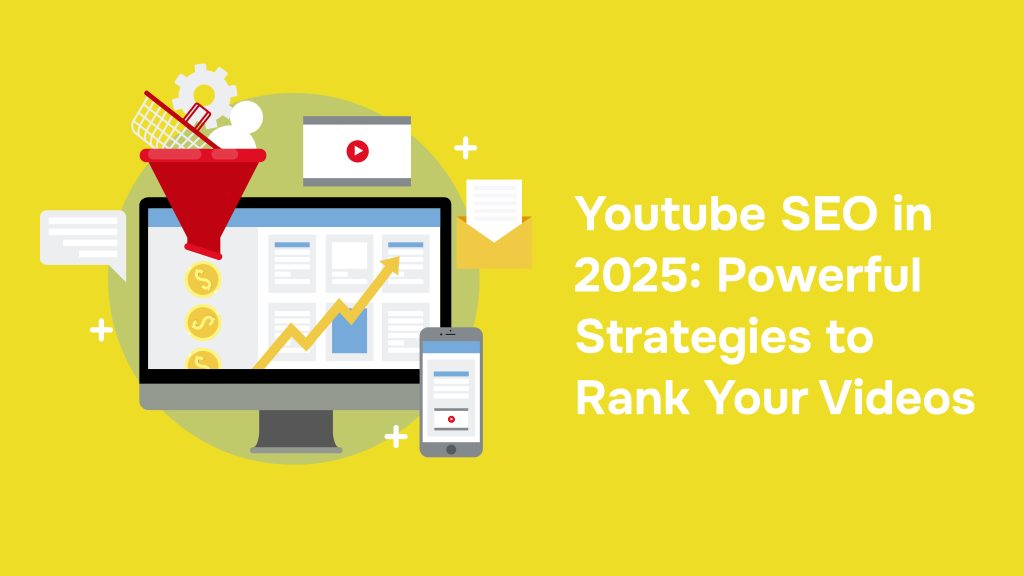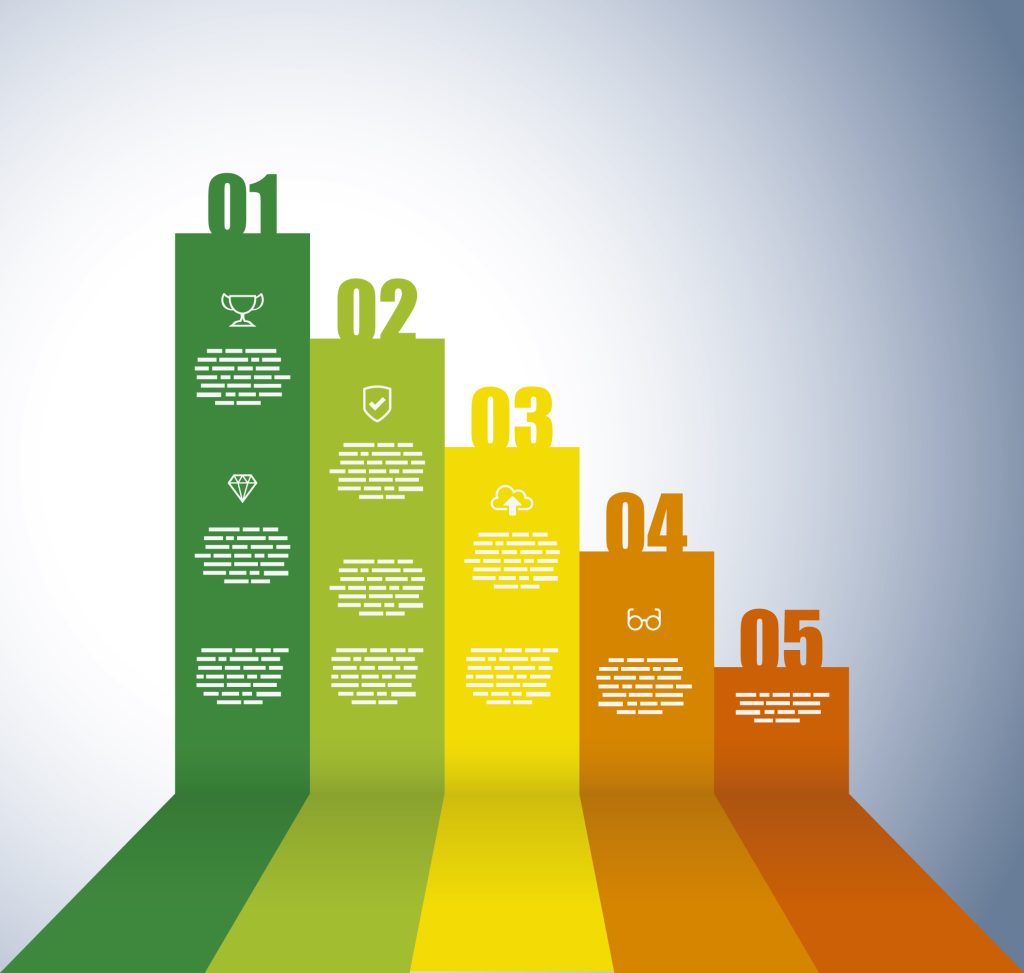

Quick promise: this is a single, actionable long-form guide that walks you — step-by-step — through what actually moves the needle for Youtube in 2025. It’s written for creators who want repeatable results: from keyword research to thumbnails, Shorts strategy, metadata, retention tactics, and channel-level signals that accelerate ranking. Read start-to-finish, or jump to the checklist and templates near the end.
Note: I pulled the latest creator and industry guidance to make sure the tactics match how YouTube is recommending and measuring content in 2025. Key claims are sourced to recent industry and platform updates. BacklinkoSocial Media DashboardRiversideThe Times of IndiaWIRED
Table of Contents
ToggleWhy YouTube SEO still matters in 2025 (and how it changed)
Youtube’s discovery system has become even more personalized. Instead of “one trending page for everyone,” recommendations and search results are tailored to what each viewer is likely to watch and enjoy — a mix of watch time, CTR (click-through rate), satisfaction feedback and past viewing habits. That means your video must both match a search intent and deliver a satisfying viewing experience to get momentum. Social Media Dashboard
Two 2025-level changes you must plan for:
-
Recommendations are hyper-personalized — The platform prioritizes content that fits a viewer’s tastes and context (watch history, session behavior, and device). This increases the value of niche relevance and audience modeling. Social Media Dashboard
-
Shorts and generative AI are reshaping discovery — Shorts remain a huge growth channel but use slightly different ranking signals (percent-watched and swipe behavior matter more). Meanwhile, AI tools for creating video and studio features (A/B testing on thumbnails/titles) are rolling out, so creators who experiment and iterate faster get an advantage. RiversideWIRED
Because YouTube is constantly testing, your best play in 2025 is an evidence-first approach: test, measure, iterate — and optimize both for search intent and viewer satisfaction.
What actually ranks videos in 2025 (short answer)
If you want the short checklist for ranking:
-
Relevance to the search query (keyword + context in title/description/script).
-
Strong CTR from an optimized title + thumbnail.
-
Immediate watch time and retention (how much of the video viewers watch).
-
Session value — does the viewer stay on YouTube and watch more after your video?
-
Engagement signals (likes/comments/shares) as a secondary signal.
-
For Shorts: percent-watched, replays, and swipe-away rate are critical. BacklinkoSocial Media DashboardRiverside
I’ll unpack each of these and show you how to optimize them.

Step 1 — SEO research for Youtube (not just Google)
People treat YouTube keyword research like Google search — partly correct, but there are differences.
Tools & workflows (fast)
-
Start with YouTube-centric tools: YouTube auto-complete, VidIQ, TubeBuddy, Ahrefs (YouTube keyword explorer), and Backlinko’s recommended steps for video keyword research. These show search volume, competition, and whether Google returns video results for the keyword. Backlinko
-
Check whether Google SERP returns video boxes for your target phrase; if Google shows videos, ranking on YouTube can also bring Google traffic. Search Engine Land
-
Use analytics to pick keywords your channel already ranks for (Search reports in YouTube Studio). Double-down on low-hanging keywords where you rank page 2–3.
Keyword classification (must do)
Classify keywords into three buckets:
-
Transactional/How-to (high intent) — “How to fix X”, “install Y”. Great for tutorials and evergreen traffic.
-
Informational / Interest — “What is X?”, “best X 2025” — good for broader reach and suggested traffic.
-
Shorts/micro-discovery — bite-sized queries and trends. Use trending query monitoring tools.
Long-tail + topical clusters
Target a long-tail seed phrase (e.g., “Youtube SEO for creators 2025”) and build a cluster of related videos (tutorial, short explainer, case study). Internal linking via playlists and pinned comments helps YouTube understand topical authority.
Step 2 — Metadata that signals relevance
Metadata still matters — but it’s a signal, not a magic wand.
Titles
-
Put your primary keyword early, but write for humans. “How to Rank Youtube Videos in 2025 (Step-by-Step)” is better than “Youtube SEO 2025”.
-
Avoid clickbait: YouTube rewards satisfaction; misleading titles give an initial CTR lift but drown you in negative feedback and low retention.
Descriptions
-
Use the first 1–2 lines to summarize the page (these show in search and under the video).
-
Include the long-tail keyword 1–2 times naturally. Add timestamps, resource links, and a call-to-action. Descriptions help Google and YouTube understand context. Search Engine Land
Tags
-
Tags are low-weight but useful for edge cases (misspellings, alternate phrasings). Include a mix of exact and related tags.
Thumbnails
-
Thumbnails + title = your ad to the viewer. Thumbnails that set accurate expectations and show emotion/frame of action get higher CTR and better retention than flashy but unrelated images. Test variations (YouTube now offers A/B tests for thumbnails and, in limited tests, titles). Cinco Días
Step 3 — Open strong: the first 15 seconds matter
Retention is king. YouTube watches how long people stay and rewards videos that are both clicked and watched.
-
Front-load value: tell the viewer in the first 10–15 seconds what they’ll gain.
-
Use a tight hook: a question, a bold promise, or a quick visual that matches the thumbnail.
-
Reduce ramp time: minimize long intros and slow starts (no 30-second logo stings unless your audience expects them).
Measure: retention curve in YouTube Analytics. If viewers drop between 0:10–0:30, test a new hook.
Step 4 — Structuring long-form videos for engagement and SEO
People think long watch time alone wins. It helps — but how viewers watch matters.
Use chapters and timestamps
Chapters improve UX, allow viewers to jump to what they want, and can increase session value by reducing short, unsatisfied bounces. They also make your video more likely to be surfaced for specific subtopics.
Natural keyword mentions inside the video
YouTube uses ASR (automatic speech recognition) to read dialog. Say your key phrases naturally in the video — in intros, sections, and the conclusion. This helps with search relevancy. (Many creators now script short natural mentions to help the ASR signal.)
Calls-to-action (CTAs) that don’t kill retention
Place CTAs after value is delivered and inside a natural pause. Encourage watch-next actions that extend session time (e.g., “If you want deeper tactics, click the next video in this playlist”).
Step 5 — How to win Suggested and Browse (not just Search)
Suggested video feeds and the home/Browse recommendation system drive huge traffic. These favor videos that add session value.
-
Create “watch next” pathways: playlists and end screens that guide viewers through content themes.
-
Video-to-video affinity: release thematic mini-series so YouTube learns to recommend your next video to someone who watched the first.
-
Thumbnail & title consistency: consistent templates help viewers recognize your brand and click subsequent videos.
Step 6 — Shorts strategy: what’s different (and how to use it)
Shorts are discovery-first and are optimized for immediate, repeat viewing behavior.
Important signals for Shorts: percent-watched, the rate of swipes-away versus full watches and rewatches, and how often viewers click through to your long-form videos. Creating Shorts that tease long-form content can funnel viewers into longer sessions. Riverside
Tactics:
-
Create Shorts that solve one micro-problem or deliver one surprising fact.
-
Use short, punchy captions (auto captions are used heavily).
-
Repurpose longer content into highlight Shorts — but ensure the Short stands alone and hooks fast.
Step 7 — Channel signals & authority
YouTube increasingly treats channel-level signals as trust measures.
-
Upload cadence: consistent publishing builds patterns the algorithm can learn from.
-
Niche focus: channels that stay topically tight are more likely to be promoted for related queries.
-
Channel homepage + playlists: optimize them as landing pages for topic clusters.
A channel that consistently produces high-satisfaction content will find new uploads given more initial exposure — it’s like a “trust bonus.”
Step 8 — Using analytics to iterate (what to watch weekly)
In your Creator Studio, focus on these metrics:
-
Impressions → CTR: low CTR with high impressions = fix titles/thumbnails.
-
Average view duration / Relative retention: measure actual minutes and percent of video watched.
-
Views leading to more watch time on YouTube (session starts): your content’s contribution to platform retention.
-
Traffic sources: are you getting search, suggested, external? Use this to replicate wins.
-
Audience retention graph: find exact timestamps where the drop happens and rewrite that part.
Tip: run controlled experiments. Upload two similar videos with small changes and track performance week-over-week.
Step 9 — Technical optimizations and Creator Studio features
YouTube keeps releasing creator tools that change the playbook:
-
A/B testing of thumbnails (and now title testing in gradual rollouts), so use these to optimize CTR and retention without re-uploading. Cinco Días
-
Chapters auto-suggestions and automatic captions: edit them where wrong — accurate captions help discoverability and accessibility.
-
Community posts & stories: use them to re-engage your audience and promote new drops.
Also be aware of platform policy: YouTube flags deceptive metadata or spam. Keep everything honest.
Step 10 — AI, generative content, and authenticity (practical stance)
2025 brought more AI-assisted creation tools. Google’s work on generative video models (Veo, etc.) and YouTube features lets creators produce short clips from text prompts. These tools are useful for ideation, test content, and rapid prototyping — but they also raise authenticity concerns. YouTube is adding transparency measures (SynthID, watermarks for AI content) and will likely prioritize authentic, high-quality creative content for long-term channel growth. WIRED
Practical guidance:
-
Use AI as an assistant: scripts, outlines, thumbnail mockups, A/B test ideas.
-
Avoid publishing generic, low-effort AI churn — it dilutes your brand and harms long-term performance.
-
Label or disclose heavily AI-generated content as required.

Tactical recipes: exact scripts, templates & examples
Below are hands-on templates you can copy and adapt.
Title templates (high CTR + clear intent)
-
How to [solve X] in [timeframe] — [benefit] | 2025
→ “How to Rank Youtube Videos in 2025 — Fast SEO Tactics That Work” -
[Number] Ways to [result] (Step-by-step)
→ “7 Ways to Get Your Youtube Video to Rank in 48 Hours” -
[Question]? [Short promise]
→ “Why Isn’t My Youtube Video Ranking? 5 Fixes That Work”
Description template (first 2 lines visible on search)
How to Rank Youtube Videos in 2025 — practical, tested tactics for better CTR, watch time, and suggested traffic. Timestamps below.
00:00 Intro
00:45 Keyword Research
03:12 Title + Thumbnail
…
Links & resources:
– Free keyword tool: [link]
– Download checklist: [link]
Subscribe for weekly Youtube growth tips ► [subscribe link]
Hook scripts (first 0–15 seconds)
-
Hook idea 1 (problem-solution): “Most creators wait months to rank. In the next 90 seconds I’ll show three things you can change today to boost rankings in 48 hours.”
-
Hook idea 2 (curiosity): “They laughed when I changed one line in my description — then my video hit the front page of search. Here’s exactly what I changed.”
Outro CTA (to improve session value)
-
“If you want the full playbook, click the next video on screen — it shows a replicable 3-video funnel that grew watch time by 40%.”
Practical 14-day launch plan to rank a new video fast
Here’s a repeatable schedule for a single new long-form video + supporting Shorts.
Day 0 (pre-launch)
-
Keyword + competitor analysis.
-
Write script, include keyword mentions.
-
Create at least 3 thumbnail options.
Day 1 (upload & promote)
-
Upload with optimized title, description and tags.
-
Start with a small paid boost or internal community push for initial impressions (optional).
-
Post 1 Short teaser linking to main video.
Days 2–7
-
Monitor impressions & CTR; swap thumbnails/titles via A/B tests if CTR is low.
-
Study retention; re-edit or publish a short follow-up addressing the strongest drop-off point.
Days 8–14
-
Promote to niche communities (but avoid spam).
-
Release 2 more Shorts repurposed from key segments to funnel back to the long-form video.
-
Use pinned comments and playlists to guide next-watch behavior.
This concentrated burst gives YouTube early signals: search relevance (from metadata), CTR (from thumbnails/title), and retention (watch behavior and Shorts funnels).
Mistakes that kill ranking (and how to avoid them)
-
Misleading thumbnails/titles — short-term CTR at the cost of satisfaction. Fix: match promise to content.
-
Poor hook & slow opening — viewers drop early. Fix: tell viewers what they’ll learn in first 10 seconds.
-
No iteration — ignoring analytics is the fastest way to stagnate. Fix: weekly review of retention + CTR.
-
Over-diversifying — a channel that tries to be everything ranks for nothing. Fix: pick a niche cluster and build authority.
Advanced: Leveraging external signals & structured data
External traffic (blogs, embeds, social) helps — not as a primary ranking factor, but as a way to get initial views and longer session signals.
-
Embed videos in relevant articles, and add schema/videoObject markup on pages so Google and YouTube can associate context.
-
Use newsletters and communities for initial watch-time boosts (not views-for-hire). Real engaged viewers are the best signal.
What to expect from the algorithm in 2025 (short forecast)
-
Continued personalization — trending pages were retired in favor of personalized and category-specific charts; creators should focus on audience modeling rather than “one-size-fits-all” virality. The Times of India
-
More creator tooling: A/B tests for titles and thumbnails are rolling out; creators who learn to experiment will optimize faster. Cinco Días
-
Growth of AI-assisted creative tools, with platform-level constraints for transparency (watermarks, disclosure). Use these tools smartly to scale ideation and production. WIRED
Example case study (concise)
A mid-sized channel focused on productivity used this approach:
-
Targeted a long-tail query (“Youtube SEO for creators 2025”) with a 12-minute tutorial.
-
Created three Shorts from the tutorial to funnel viewers.
-
Ran a thumbnail A/B test; the winner had +16% CTR and +12% average view duration.
-
Over 30 days, search impressions grew 3x and suggested traffic increased by 28%.
Key takeaway: coordinated long-form + Shorts + iterative testing produced compounding gains.
Checklist — 30-point Youtube SEO pre-publish & post-publish
Pre-publish
-
Target keyword chosen (seed + 3 related long-tails).
-
Title with keyword early and promise.
-
1–2 strong thumbnail designs.
-
First 2 lines of description optimized + timestamps.
-
Tags: exact + related phrases.
-
Script includes natural keyword mentions.
-
Chapters/timestamps prepared.
-
Captions verified (auto-captions edited).
-
End screen planned (suggest playlist).
-
Short teaser ready to publish.
Post-publish (first 14 days)
11. Monitor CTR (day 1).
12. Run thumbnail A/B if CTR < expected.
13. Monitor retention (first 48 hours).
14. Publish 2 more Shorts to funnel.
15. Add to 1–2 playlists (topical).
16. Pin comment with next-video link.
17. Share to 2 niche communities (no spam).
18. Check external embeds (blog, newsletter).
19. Test minor title variations if allowed/available.
20. Document everything in a spreadsheet for iteration.
Ongoing
21. Revisit analytics at 7 and 30 days.
22. Re-edit/create follow-up videos for drop-off points.
23. Refresh thumbnail after 30–60 days if impressions are high but CTR is low.
24. Reuse best-performing segments for Shorts.
25. Maintain publishing cadence.
26. Build topical playlists.
27. Reoptimize older videos (titles/descriptions/thumbnails) using lessons learned.
28. Use community posts to drive recurring watch.
29. Use audience polls to validate new topics.
30. Maintain authenticity with disclosure for AI-created content.
FAQs (practical answers)
Q: How long before YouTube starts ranking a video?
A: YouTube typically begins to test a new video within hours, but measurable ranking momentum often takes 48–72 hours. That’s why the first 2–7 days are crucial: impressions, CTR and retention in that window influence broader distribution. Use concentrated promotion and Shorts in that window. Backlinko
Q: Should I focus on Shorts or long-form?
A: Both. Shorts are excellent for discovery and funneling, long-form builds depth and session value. Use Shorts to generate initial interest and long-form to capture deeper watch time and authority. Riverside
Q: Do tags still matter?
A: Tags are low-weight but useful for edge-case signal matching (misspellings, alternate phrasing). They won’t replace a strong title/description/thumbnail combo.
Q: Can AI tools replace filming skills?
A: No. AI is great for ideation and speed, but the platform rewards human creativity, perspective, and authenticity. Use AI to scale, not to become generic.
Closing: a realistic, growth-minded plan
Ranking on Youtube in 2025 is a systems game: keyword research, persuasive metadata, a great hook, retention-first editing, Shorts funnels, and relentless testing. The platform rewards creators who can consistently deliver value and adapt quickly with data.
 Visit the LearnFlu Website
Visit the LearnFlu Website
For more detailed information about the program, including curriculum specifics, application deadlines, and eligibility criteria, we encourage you to visit the LearnFlu. Here, you’ll find everything you need to know to prepare your application and begin your journey with us.
Submit Your Application
When you’re ready, navigate to the courses section of our website to submit your application. The process is straightforward, but remember to review all requirements and recommendations to ensure your application showcases your strengths and aligns with what our selection committee is looking for.
Stay Connected
To keep up with the latest updates, insights, and success stories from the LearnFlu community, follow us on our social media platforms:
– [Facebook](LearnFlu): For news and community highlights
– [Instagram](LearnFlu): For real-time updates and industry insights
– [LinkedIn](LearnFlu): For professional networking and opportunities
Contact Us
For further inquiries or if you have specific questions about the program or the application process, don’t hesitate to reach out to our admissions team. You can contact us directly through our website’s contact form or by emailing us at support@learnflu.com